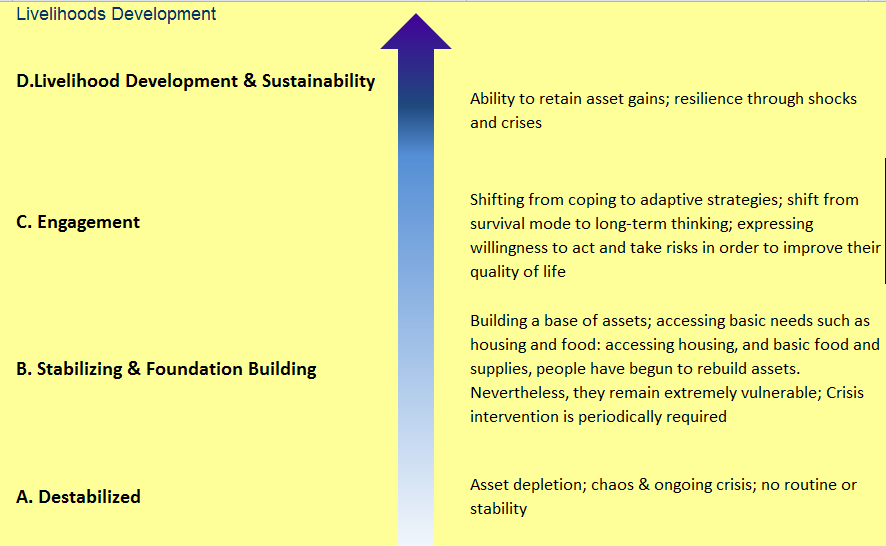Sustainable Livelihoods is a holistic approach to looking at poverty reduction by supporting participants to build on their strengths. This entails building a range of assets: social connections, access to supports and services, income, meaningful work, active learning and skill development. While the the process of change has been facilitated by the social enterprise, employees themselves are responsible for their own change. This workbook introduces the framework in more detail and provides a simple form to track asset and livelihood development for employees.
The Sustainable Livelihoods idea was first introduced by the Brundtland Commission on Environment and Development, and the 1992 United Nations Conference on Environment and Development expanded the concept, advocating for the achievement of sustainable livelihoods as abroad goal for poverty eradication.
This worksheet is based on UK Department of International Development SL resources :
It is based on how an individuals develops following 'assets'.
| Physical Assets: -Access to basic needs, services and entitlements including food security; -Stable, affordable housing; Personal security; -Access to social services and information. |
| Social Assets: -Ability to engage in the community and broader society including social connections; -Peer support; -Participation in decision-making; -Political literacy |
| Personal Assets: -Personal identity including self-esteem; -Self-confidence; -Motivation; -Other emotional resources. |
| Human Assets: -The ability to work and to engage in the economy including employability; -Leadership; -Health; -Skills; Knowledge. |
| Financial Assets: -Economic security including: economic literacy; earning power; disposable income; and savings. |

